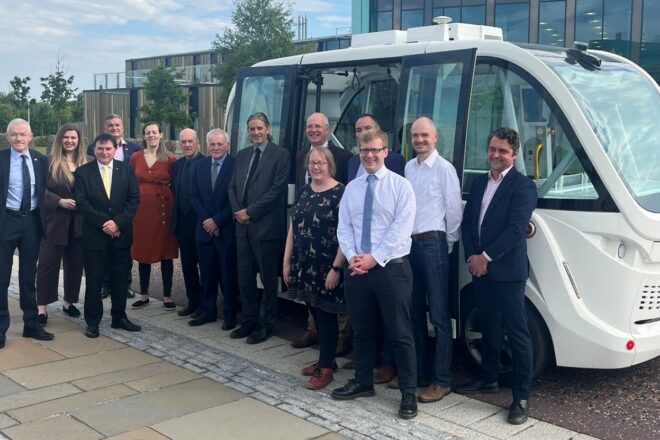About HITRANS
HITRANS is one of seven Regional Transport Partnerships in Scotland which were established through the 2005 Transport (Scotland) Act.
The Partnership has a range of powers, including those to:
- Require funding from its member councils.
- Give grants and loans in order to implement the regional transport strategy.
- Borrow money for specific capital expenditure.
- Participate in Community Planning.
Regional transport partnerships were established to strengthen the planning and delivery of regional transport so that it better serves the needs of people and businesses. HITRANS brings together local authorities and other key stakeholders to take a strategic approach to transport in their area. HITRANS is, of course, only one of a number of organisations which determine transport provision in our area.
The HITRANS Area
The HITRANS area is unique within the UK. Its general remoteness from major population centres is one of its defining features. However, it is also diverse, containing a mixture of islands, remote mainland, rural and urban areas.
The area includes the fast growing city of Inverness and other major settlements such as Elgin and Oban, while also remote islands with populations of under 100 people.
The main transport issues are different for different communities. Parts of the Inner Moray Firth area face growing road congestion, while for islands in Argyll & Bute the main issue may be the cost and timetabling of ferry services.
The Facts
The area is large, accounting for around 50% of Scotland’s land mass. It includes long, indented coastlines as well as mountainous areas. It also has many inhabited islands. These physical features act as barriers to the movement of people and goods. Routes can be slow and/or circuitous, increasing the time and cost of travel.
Despite its size, the HITRANS area is home to less than 10% of Scotland’s population. The small scale of the local market means that many businesses have a strong outward focus, selling goods and services outside the area. This means that transport links with other parts of Scotland and beyond are as important as those within the area itself.
The wide dispersal of settlements, and sparsity of population and businesses, characterise much of the area. They create a number of challenges for the transport network, especially:
- Cost effective delivery of public transport. Limited frequency of bus and train services means that for many car ownership is a necessity rather than an option. The cost of road fuel is a key issue for many communities.
- Long distances involved in trip making, adding time and cost to many journeys.
Population
Some parts of our area are growing strongly, with rising population levels. Others face challenges in terms of sustaining economic activity and reversing population decline. However, as a whole, the area is less prosperous than the Scottish average. There is a need to increase income for businesses and residents in order to close the gap with the rest of the country. It is generally recognised that improving the transport network will play an important part in achieving this objective.
The Environment
The natural environment is important in attracting both visitors and residents to our area. It is also a factor in the quality and marketing of some businesses’ products. The environmental resource of the area-wind, wave and tidal-presents a major economic opportunity through renewable energy. The challenge is to continue to develop our transport network without compromising our pristine environment.
The Role of HITRANS and Others
The European Union is responsible for legislation on a range of issues. This includes access to aviation and rail markets, the Working Time Directive and climate change. Within the UK, most transport powers and delivery are a Scottish responsibility.
However, some powers and policies are still the responsibility of the UK Government and its agencies. Examples include managing some cross-border rail franchises; maritime safety; and vehicle fuel duty.
Transport Scotland
The Scottish Government’s transport agency Transport Scotland co-ordinates national transport strategy, and financial and legislative matters related to transport on behalf of the Scottish Government. It is responsible for policy on air, freight, ferry services, ports and harbours, buses and local road provision.
Transport Scotland has funding for a range of activities and services. These include the Air Discount Scheme and Freight Facilities Grants. It is also responsible for procuring many of our major ferry services and the funding and management of our main airports.
Transport Scotland has specific responsibilities regarding aviation policy, ferry services, the rail and trunk road networks in our area. It is responsible for managing the ScotRail passenger franchise, as well as specifying and funding rail infrastructure work to be undertaken by Network Rail. It is also responsible for planning trunk road investment; procuring and managing delivery of new trunk roads and enhancements; and managing the existing network, including procuring maintenance. Transport Scotland is responsible for the national concessionary travel scheme.
Through Caledonian Maritime Assets Limited (CMAL) the Scottish Government also provides funding for works at harbours used by “lifeline” ferry services.
Local Authorities
Our member local authorities strongly influence the provision of transport within their own areas. The local authorities’ responsibilities include: the non-trunk road network; supporting the bus network; footpaths and cycleways; demand responsive transport services; school and social work transport; ownership and/or funding of ferry services; and ownership of airstrips.
Our Role in Community Planning
Community Planning is the process by which the public services in each local authority area are planned and provided. A number of public sector organisations-including HITRANS-are statutory partners in Community Planning.
Single Outcome Agreements
Single Outcome Agreements are the means by which Community Planning Partnerships agree strategic priorities for their area. The priorities are set out in the form of outcomes. These outcomes are linked to Scottish Government’s 15 National Outcomes which describe what Scottish Government wants to achieve over the long term.
HITRANS’ role
HITRANS’ role is to support the Community Planning Partners in developing transport in order to help achieve the National Outcomes. Of the 15 National Outcomes, 12 can be advanced through delivering the regional transport strategy. Therefore, transport-and HITRANS-have a key role in the Community Planning process.
Legislation and Policies That Shape Our Work
In 2009 the Scottish Parliament passed the Climate Change (Scotland) Act. This contains a long term target to cut greenhouse gas emissions by 80% by 2050, with an interim target of reducing emissions by 42% in the period to 2020.
The Act obliges, from 2011, all defined “public bodies”- which includes HITRANS-to act in the way best to contribute to achieving the emission targets.
The 2001 Transport (Scotland) Act provides powers to transport authorities to draw up binding schemes in relation to local bus services. These schemes encompass either integrated bus ticketing or provision of information on timetables, fares, etc. The Act also enable transport authorities to instigate schemes for bus quality partnerships and bus quality contracts.
Scottish Government is committed to ensuring that all public services work with maximum efficiency and effectiveness. This includes sharing resources, knowledge and examples of good business practice across organisations.
HITRANS is continuing to develop working arrangements between our five Councils to encourage sharing of resources and expertise. In addition, there may be opportunities for HITRANS to support local authorities to deliver particular projects where they may not have the capacity or resources to do so.
In This Section
Pages in About HITRANS


